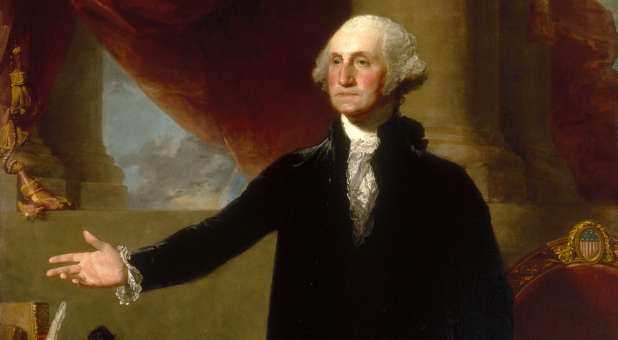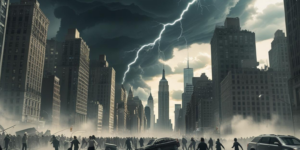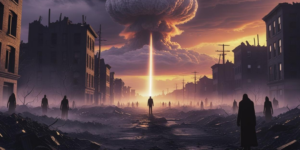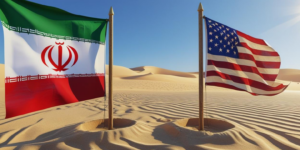The Marxist Crusade to Destroy America’s History
Nations derive their sense of identity from their history. If you want to radically transform a nation, you must deal with its history.
Alexander Solzhenitsyn spent eight years in a Soviet labor camp and observed the Marxist/communist approach to transforming Russian society. In 1726: The Year that Defined America he wrote, “To destroy a people, you must first sever their roots.”
This is the ideology behind the tearing down of monuments and statues. Statues of George Washington, Thomas Jefferson, Abraham Lincoln and others are being vandalized and torn down. In Berkeley, California, the school board capitulated to pressure from the Left and voted to remove the names of George Washington and Thomas Jefferson from two elementary schools.
This assault on America’s history is the prelude for implementing socialism, communism and Marxism. Demonizing and destroying a people’s history makes those people vulnerable to being molded into something very different. Karl Marx referred to this reality when he wrote, “People without a heritage are easily persuaded.”
Preserving America’s true history is critical, for as George Orwell said in his classic book, 1984, “Whoever controls the past, controls the future.”
And commenting on the demise of nations in world history in 1726: The Year That Defined America, Carl Sandburg, winner of two Pulitzer Prizes, said, “When a nation goes down, or a society perishes, one condition may always be found; they forgot where they came from. They lost sight of what had brought them along.”
America’s Founders at the Forefront of Ending Slavery
The most common reason given for tearing down statues of America’s founders is that they were racists and slaveholders. This, however, is a specious argument, especially when it is set in the context of the day. The truth is that there was a powerful 18th century anti-slavery movement in America and by 1776 virtually every founder had taken a stand against slavery.
Yes, at a time when slavery was accepted and practiced in most of the world, America was experiencing a powerful movement against it. The brilliant black scholar, Dr. Thomas Sowell, has noted this, saying,
Slavery was just not an issue, not even among intellectuals, much less among political leaders, until the 18th century–and then it was an issue only in Western civilization. Among those who turned against slavery in the 18th century were George Washington, Thomas Jefferson, Patrick Henry, and other American leaders. You could research all of 18th century Africa or Asia or the Middle East without finding any comparable rejection of slavery there (Hyatt, 1726: The Year that Defined America, 90).
The late historians, Elizabeth Fox-Genovese and Eugene Genovese observed, “Perception of slavery as morally unacceptable —as sinful —did not become widespread until the second half of the eighteenth century.”
Christian Awakening and Abolition
In my book, 1726, I have shown that this sudden movement against slavery was a result of the Great Awakening that ebbed and flowed between 1726 and 1770. In this Christian awakening entire communities repented and turned to God. In his autobiography, Benjamin Franklin described the transformation that came over his hometown of Philadelphia in 1739.
He wrote, “It was wonderful to see the change soon made in the manners of our inhabitants. From being thoughtless or indifferent about religion, it seemed as if all the world were growing religious so that one could not walk through the town in an evening without hearing psalms sung in different families of every street” (Hyatt, 1726: The Year that Defined America, 79).
That Blacks and whites were brought together by this awakening is made clear by George Whitefield’s account of the same revival. After preaching his farewell sermon to a massive crowd gathered in front of the Philadelphia courthouse, Whitefield noted in his journal, “Near 50 Negroes came to give me thanks for what God had done for their souls.” Whitefield considered this an answer to prayer, saying, “I have been much drawn in prayer for them, and have seen them wrought upon by the word preached” (Hyatt, 1726: The Year that Defined America, 70).
From Evangelism to Social Transformation
At the beginning of the awakening in 1726, outreach to the black populace was evangelistic in nature and not characterized by opposition to slavery. Those early preachers, such as Whitefield, Gilbert Tennant and Jonathan Edwards, saw their primary purpose to be in getting people ready for the next world, not necessarily improving their lot in this one. In their thinking, a slave on his way to heaven was far better off than a king on his way to hell.
Nonetheless, their insistence on sharing the gospel with all people and their willingness to share Christian fellowship with Blacks, both slave and free, breached racial and cultural barriers in colonial America. To cite another example, Samuel Davies (1723-1761) gave special attention to Blacks, both slave and free, during his time of ministry in Virginia and found them especially responsive to the Gospel message.
In 1757, he wrote, “What little success I have lately had, has been chiefly among the extremes of gentlemen and Negroes. Indeed, God has been remarkably working among the latter. I have baptized 150 adults; and at the last sacramental solemnity, I had the pleasure of seeing the table graced with 60 black faces” (Hyatt, 1726: The Year that Defined America, 70).
The inclusive gospel message they preached, and their compassionate treatment of Blacks, created a climate conducive to the anti-slavery sentiments that would burst forth through those who would come after them.
Second Generation Awakening Preachers Attack Slavery
Indeed, the revivalists who came after Edwards and Whitefield carried the message of their predecessors to its logical conclusion. If we are all creatures of the same Creator and if Christ died that all might be saved, then how can slavery ever be justified?
Samuel Hopkins (1721–1803), who had been personally tutored by Jonathan Edwards, pastored for a time in Newport, Rhode Island, an important hub in the transatlantic slave trade. His response to what he saw in Newport was like Paul’s response to the idols in Athens. Paul’s spirit was “provoked” by the idols of the Athenians, and Hopkins was offended and outraged by the “violation of God’s will” he saw in Newport. He declared, “This whole country have their hands full of blood this day.”
Hopkins began preaching passionately against slavery and in 1774, after the First Continental Congress had convened in Philadelphia, he sent a pamphlet to every member of the Congress asking how they could complain about “enslavement” to England and overlook the “enslavement” of so many Blacks in the Colonies. Many joined his abolitionist crusade and they spread their anti-slavery gospel message up and down the eastern seaboard.
Yes, at a time when slavery was accepted and practiced throughout the world, it suddenly became anathema in America. When compared with world history, the unique characteristics of slavery in America were the brevity of its existence and the moral outrage against it. This can only be explained by 1726 and the Great Awakening that began that year.
To read more of this article, visit biblicalawakening.blogspot.com. {eoa}
This article is derived from Dr. Eddie Hyatt’s latest book, 1726, available from Amazon and his website at eddiehyatt.com. He is also the founder of the “1726 Project” whose goal is to spread the message of America’s unique birth out of the First Great Awakening and call on believers everywhere to pray for another Great Awakening across the land.




























































